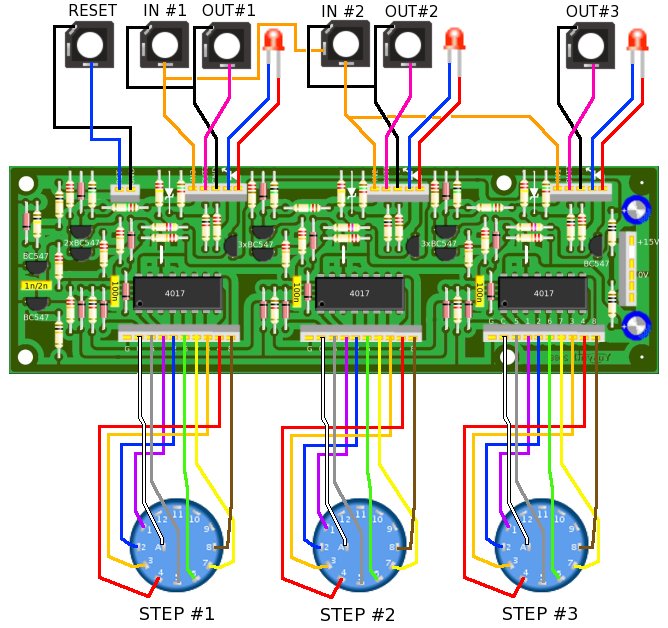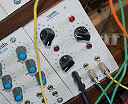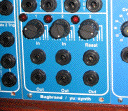reference
|
value
|
number
|
U1,U2,U3
|
4017 CMOS decade counter
|
3
|
Q1.....Q11
|
BC547
|
11
|
D1.....D16
|
1N4148
|
16
|
Z1....Z3
|
optional 5V zener
diodes (see text)
|
3
|
R1,R2
|
10 ohm 5% |
2
|
| R5,R12,R17,R24,R29,R36 |
220 ohm 5% |
6
|
| R8,R14,R20,R26,R32,R38 |
1K 5%
|
6
|
R13,R25,R37
|
1.5K 5% |
3
|
| R10,R22,R34 |
4.7K 5% |
3
|
| R41 |
10K 5%
|
1
|
R6,R7,R9,R18,R19,R21,R30,R31,R33,R42
R43
|
22K 5% |
11
|
| R39 |
100K 5%
|
1
|
| R11,R23,R35 |
220K 5% |
3
|
| R3,R15,R27,R40 |
1M 5% |
4
|
R4,R16,R28
|
1.2M 5% |
3
|
C6
|
1nF to 2.2nF polyester
film |
1
|
C3,C4,C5
|
100nF multilayer ceramic
|
3
|
C1,C2
|
22µF/25V electro.
|
2
|
LD1,LD2,LD3
|
red LED
|
3
|
Jk1...Jk6
|
6.5 mm jack socket
|
6
|
|

























